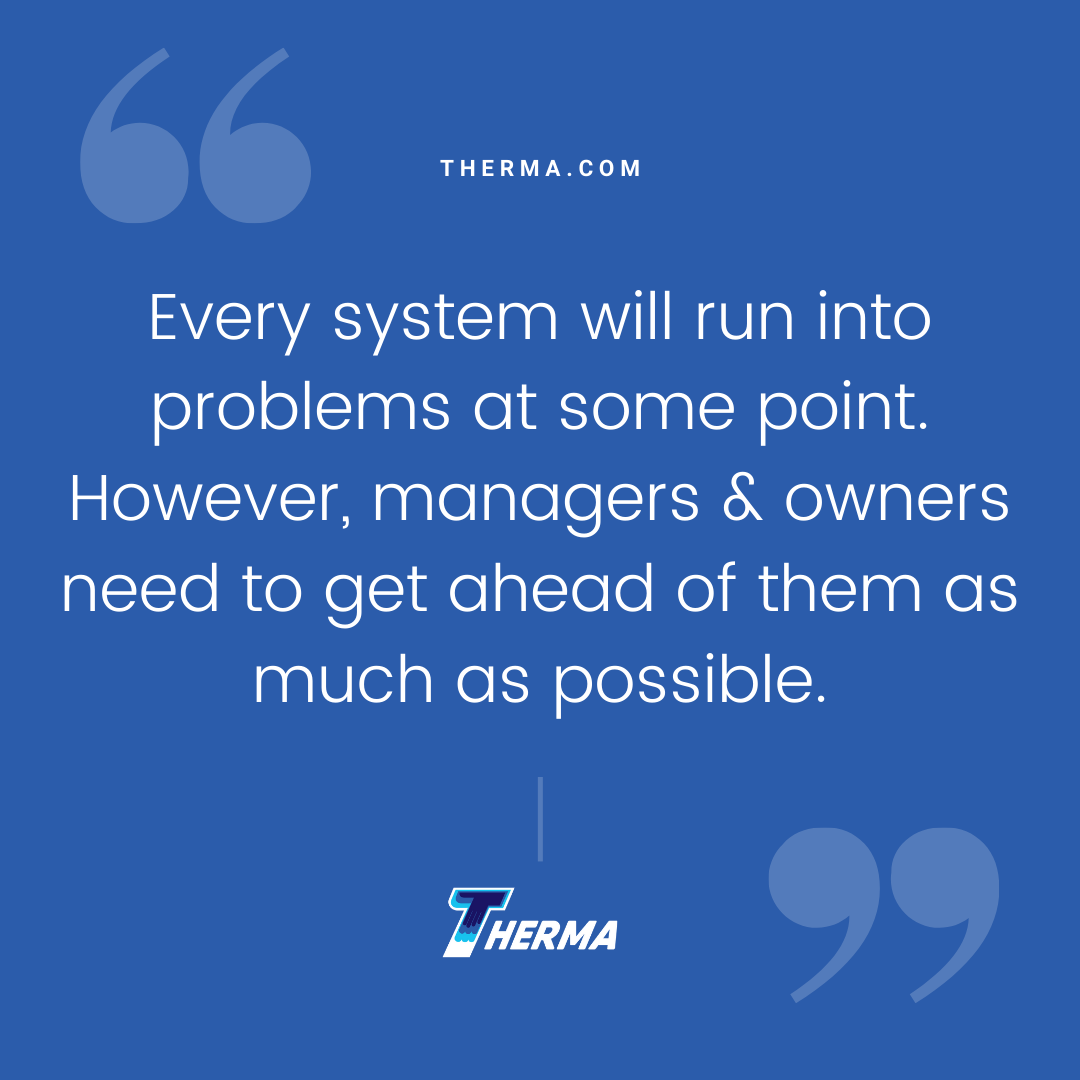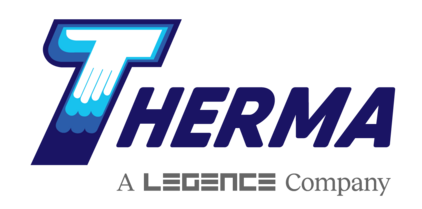by Patti Dees
Even the most well-maintained equipment and systems can experience wear and tear over time. HVAC systems often face issues with the changing of seasons with cold winters and warm summers, creating a greater need for optimized furnace and air conditioning (AC) performance. Here are the four most common AC problems that facilities may face during warmer months and how to address them with preventive maintenance, building automation and more.
1. Moisture and Mold
Moisture is a serious concern for many reasons. Mold, mildew and pathogens love moist environments. Occupants suffer when these organisms are allowed to flourish. The damp also causes damage to pipes, equipment and the building itself.
Commonly found signs of moisture are condensation and the presence of mold and mildew. In humid environments, differences in temperature, especially along surfaces, create condensation as water in the air is cooled below its dew point. Condensation is normal at the evaporator, but drain lines control where the liquid is displaced. Condensation outside of this, either along poorly insulated pipes and ductwork or leaking from a clogged drain line, is problematic.
Crawl spaces and pipe runs positioned behind walls can hide the water collecting until the damage is done. Long-standing water weakens pipes through corrosion, and the distortion or gradual disintegration of interior building materials leads to further damage within a building.

2. Refrigerant Leaks
Refrigerant flows in lines connecting the compressor to the evaporator coils. Leaks can be dangerous and costly. Not only are some refrigerants toxic to people and the environment, some are flammable.
On top of the safety concerns, there are financial consequences to AC refrigerant leaks. If leaks are not identified and repaired in a timely manner, the AC system’s efficiency falls and the overall cost of running the unit increases. The cost of recharging the lines with refrigerant also increases the longer it takes to complete repairs.
Signs of a refrigerant leak include a system that runs more frequently than normal, hissing sounds, ice buildup and air that blows warmer than its set temperature. Fittings, corrosion and thermal stress are usually the culprits.
3. Uneven Temperatures
The goal of an efficient HVAC system is comfort. Ideally, temperatures are consistent across the space. However, common issues are unintended hot/cold zones and thermal stratification. Why? Well, sometimes it is the space itself.
Spaces struggling with hot/cold zones are not always having issues with the temperature of the air. Thermostats controlling unconnected areas and ductwork that fail to support the layout of the building can lead to areas that have little to no air blowing into a space — or too much air focused at occupants elsewhere. When buildings are repurposed or renovated, HVAC systems need to be redesigned and updated as well.
Large areas have a different type of temperature problem: thermal stratification. With cooler air falling below warmer air, it is easy to find bands of different temperatures within the same space. Mixing and redistributing air with fans or better ventilation evens out the temperature of the space as a whole.

4. Indoor Air Quality (IAQ)
Complicated commercial and industrial HVAC systems are sometimes difficult to troubleshoot. An ailing system may have symptoms with several possible causes, as can be seen with IAQ issues. Odors and stagnant air can indicate a variety of possible concerns such as mold, leaking ductwork or underperforming ventilation. Even seemingly unrelated events, such as an increase in illnesses among occupants, can signify a problem with the building’s AC.
Taking Action
Every system will run into problems at some point. However, managers and owners need to get ahead of them as much as possible. The following actions can help minimize disruptions, with a side benefit of improving efficiency:
- Identify sources of moisture and humidity. Openings in the building envelope, lack of humidity controls and poor insulation can create serious headaches.
- Sensors, meters and building automation can help with tracking energy costs, monitoring equipment and alerting staff at the first signs of problems.
- Renovation and construction projects are opportunities to head off potential future problems. Work with knowledgeable contractors to design an AC system that fits the building.
- Preventive maintenance (PM) includes checking pipes, valves and other equipment that can fail. Catching breakdowns before they happen saves money. The best way to deal with AC concerns is to be proactive. Take advantage of experienced professionals like those at Therma to service equipment, schedule PM tasks or design a new system.
Work With Therma
Is your facility experiencing any of these common AC problems? It may be time to take action to remove moisture, end refrigerant leakage, improve IAQ and make your work environment comfortable. Contact Therma today to keep your HVAC systems working efficiently.
Patti draws on her background as a chemical engineer to share information with readers on technology, manufacturing, and construction.
Sources
Plant Engineering – HVAC systems in large plants: solving 5 common issues
Grainger – 5 HVAC Emergencies: How to Identify & Avoid Them
The Refrigeration School – What To Know About Refrigerant Leaks







